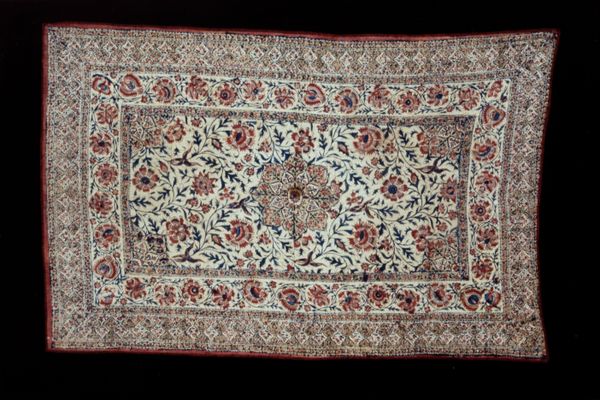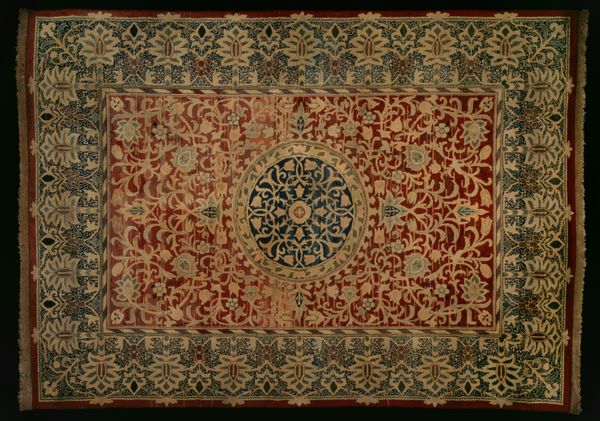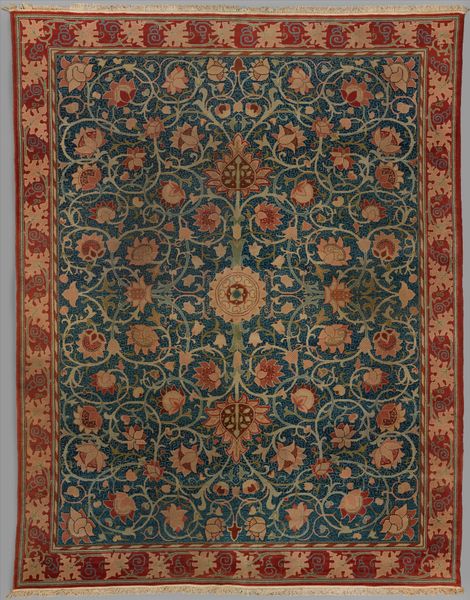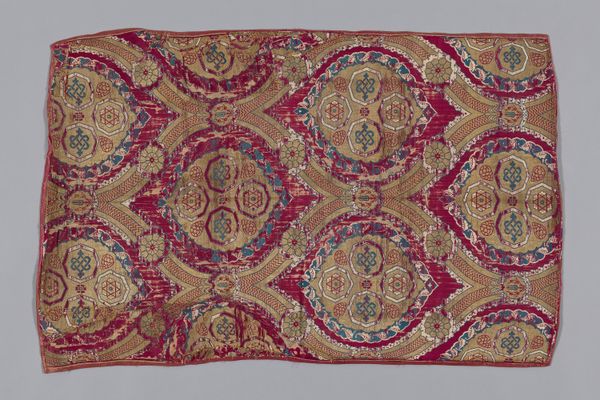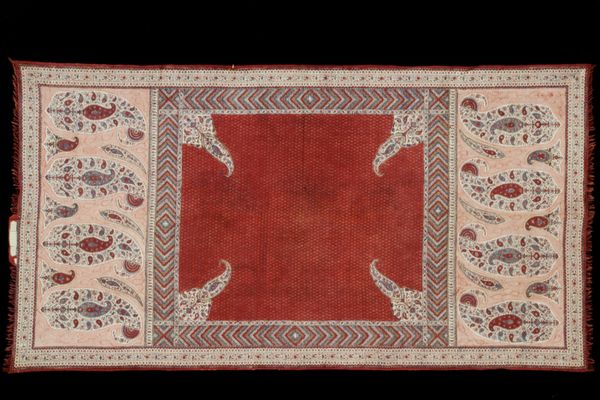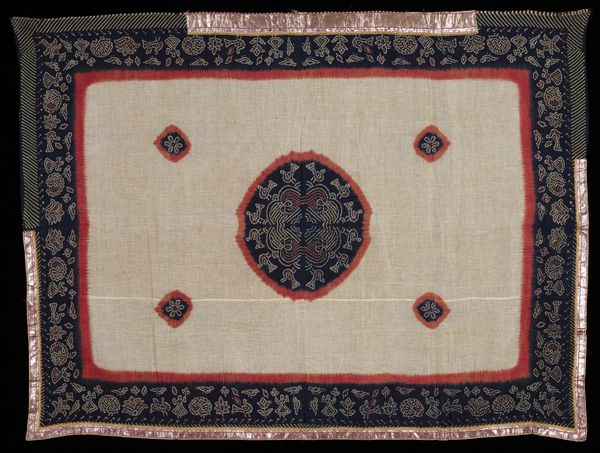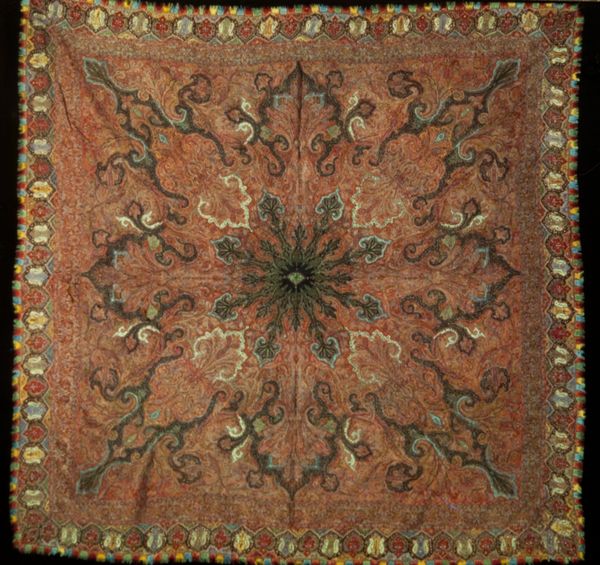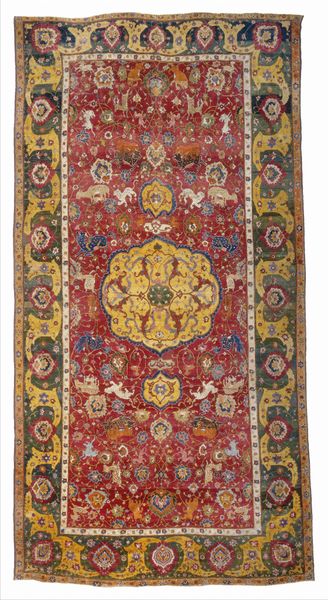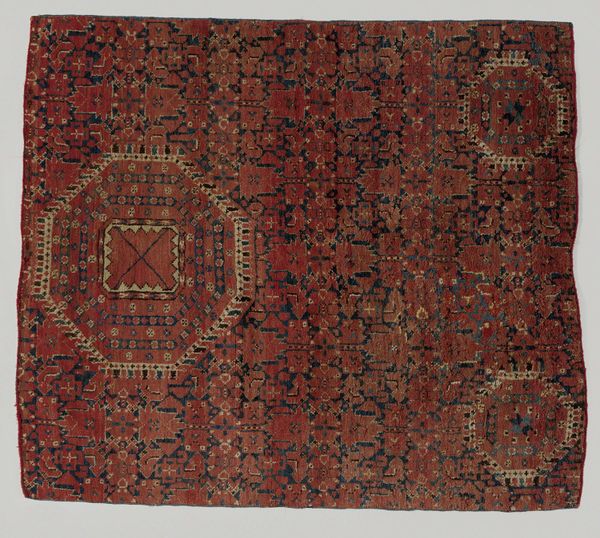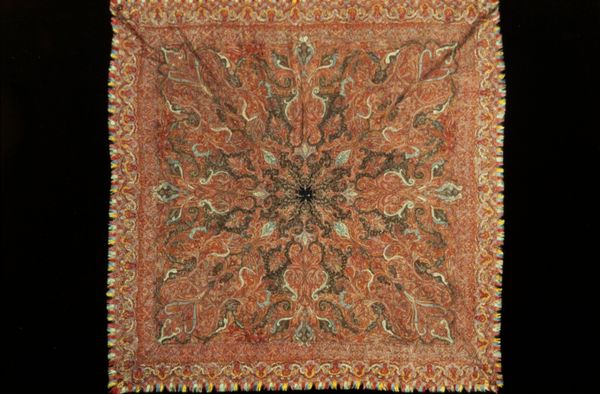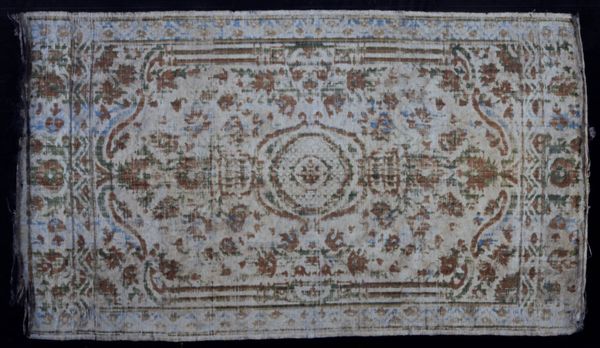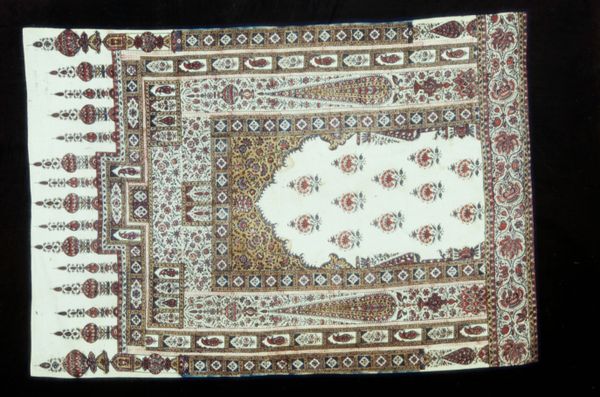
textile
#
pattern
#
textile
#
geometric pattern
#
geometric
#
orientalism
#
decorative-art
Copyright: Public Domain
Curator: Here we have an exquisite textile from the 19th century titled “Shawl,” held in the collection of the Minneapolis Institute of Art. Editor: It immediately evokes a sense of timeless elegance for me; the delicate pattern creates a rich surface. It feels both intricate and comforting. Curator: The piece clearly references Orientalist aesthetics. Looking at the historical context of the period, particularly European imperialism, do you see any parallels to art made in that era? How was cultural identity affected during this time? Editor: Definitely. I'm struck by the persistent repetition of the paisley motif. Its shape seems to point to cultural memory, a visual echo across centuries, appearing in different places and always being recontextualized to take on new meaning. But its original significance remains elusive, hidden in those twisting curves, almost a metaphor for time itself. Curator: The shawl embodies tensions, as the anonymous creator seems to adopt and adapt these motifs. We can imagine it in the homes of European collectors, who would use such an object for completely different ends. It also begs the question of the artist’s labor; its complex patterning suggests many, many hours of work. What do the formal qualities convey about power, privilege, and visibility, or lack thereof? Editor: Absolutely. What's fascinating is how something seemingly decorative carries so much weight. Even its coloring seems steeped in significance – that red border grounding everything like the foundation of civilization while the cream hints at possibility, as if waiting to be colored with individual experience. Curator: These objects were very valuable, signaling wealth, social position, or a global perspective, reflecting colonial interests as status. Thank you for lending me your expertise! Editor: The pleasure was all mine. It makes one wonder what secrets are wrapped within it.
Comments
No comments
Be the first to comment and join the conversation on the ultimate creative platform.
